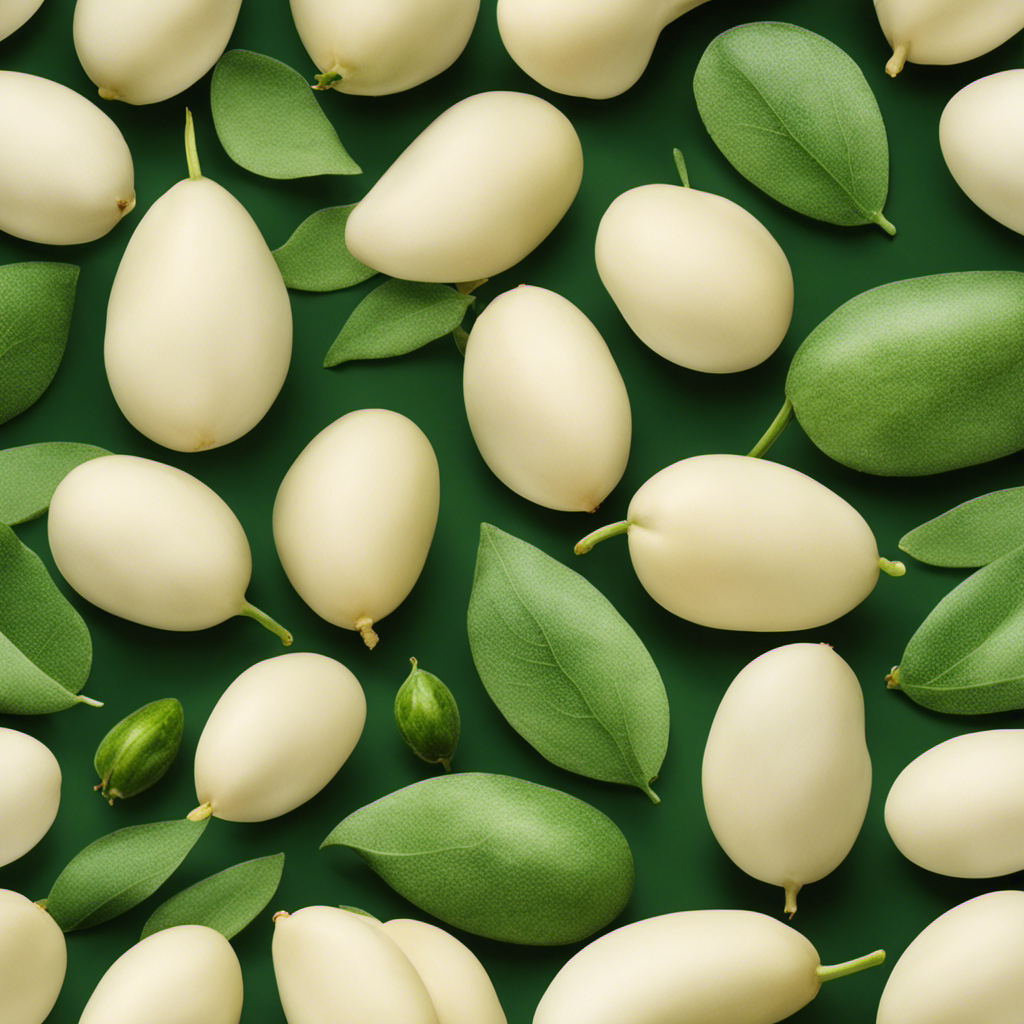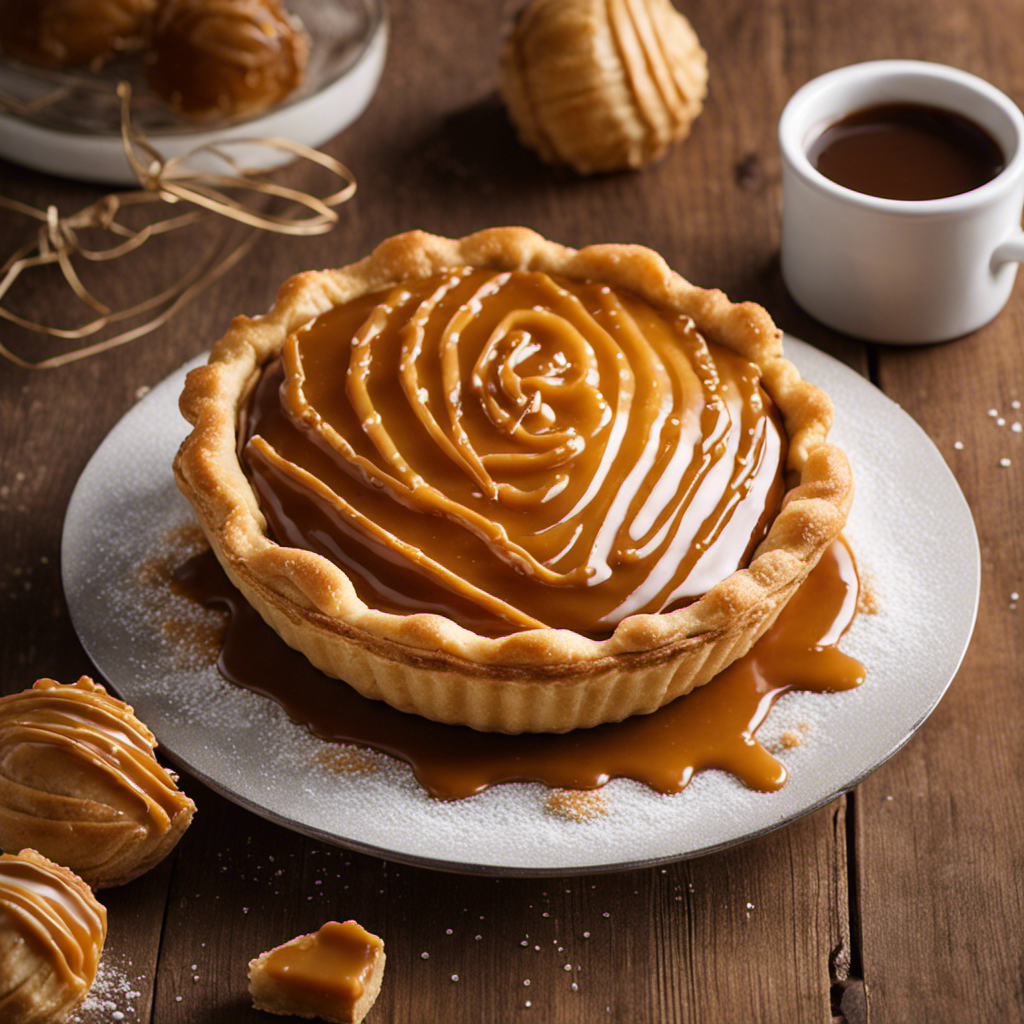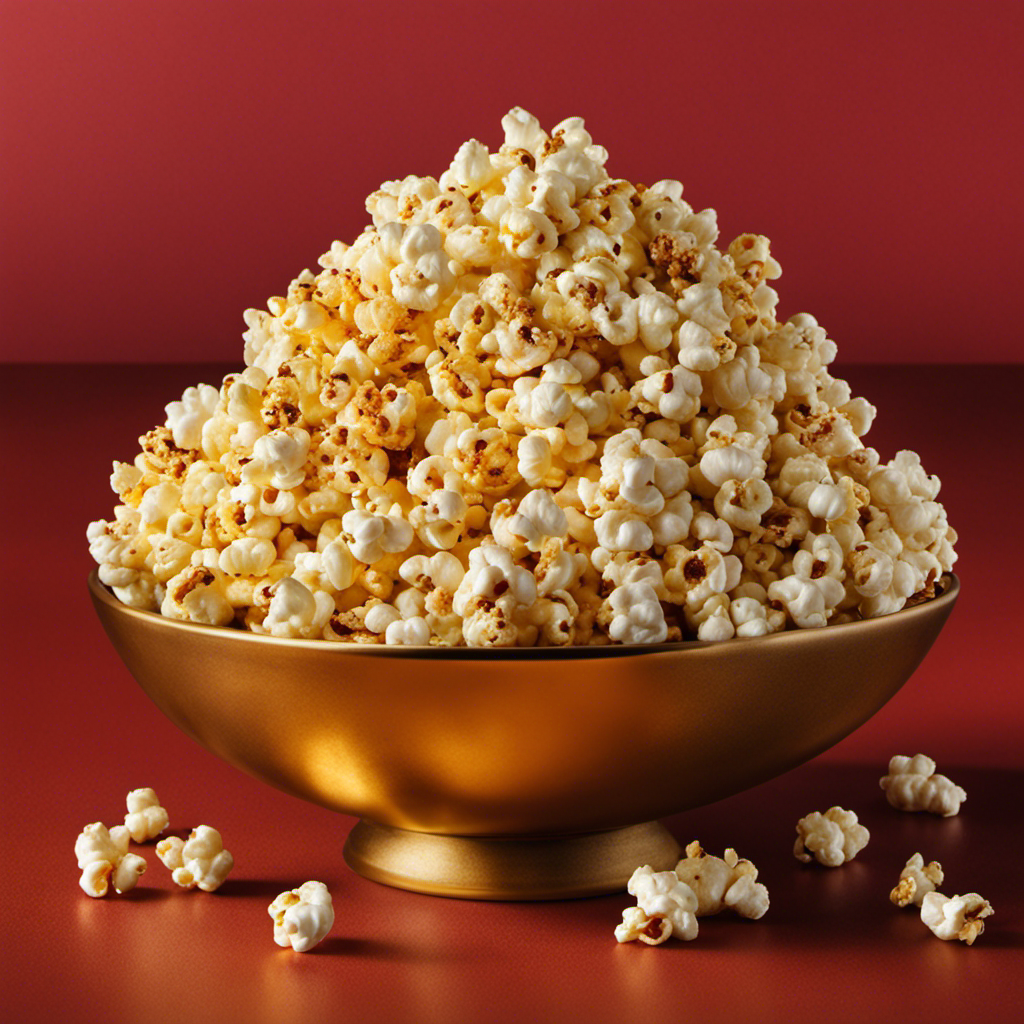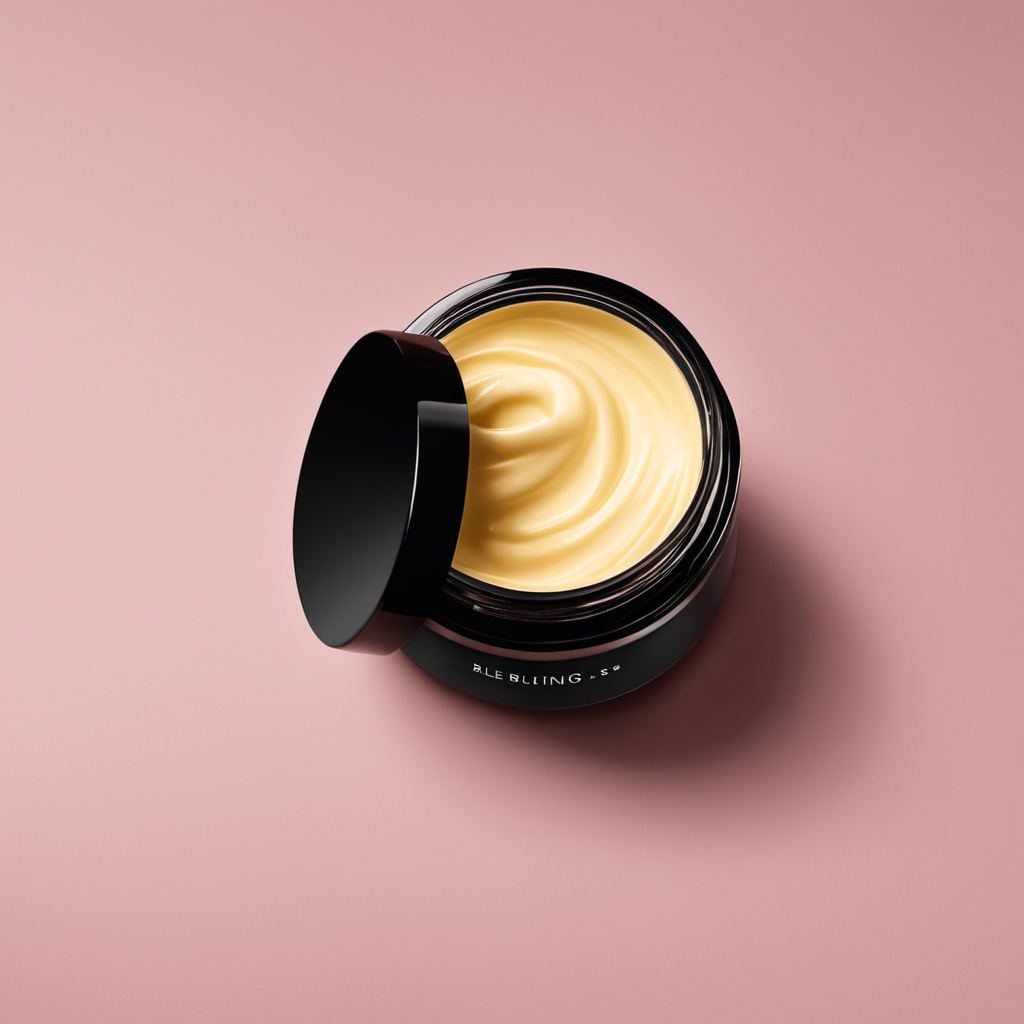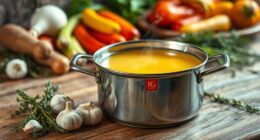As a food writer, I have always been fascinated by the diverse and unique qualities of different ingredients.
One such ingredient that continues to captivate my taste buds is the butter bean. From its origins to its health benefits and culinary uses, there’s so much to discover about this humble legume.
So, what exactly is a butter bean? Join me on a journey of exploration as we uncover the secrets behind this delectable and nutritious bean.
Get ready to be amazed by its rich history, mouthwatering taste, and endless possibilities in the kitchen.
Key Takeaways
- Butter beans, also known as lima beans, have been cultivated for thousands of years and originated in ancient Peru.
- There are various varieties of butter beans, such as Fordhook, baby lima beans, and Christmas Lima beans, each with unique characteristics and flavors.
- Butter beans are rich in protein, fiber, essential vitamins, and minerals, and can provide sustainable energy and support weight management.
- Butter beans can be cooked using different methods and used in a variety of recipes, including soups, stews, salads, and dips.
Origins of the Butter Bean
You may be surprised to learn that the origins of the butter bean can be traced back to ancient Peru. These legumes, also known as lima beans, have been cultivated for thousands of years and are now enjoyed worldwide.
Butter beans come in various varieties, including the large Fordhook and the smaller baby lima beans. Their appearance is distinctive, with a creamy white color and a smooth, buttery texture. When cooked, butter beans have a mild, nutty flavor that pairs well with a range of ingredients.
Rich in protein, fiber, and essential vitamins and minerals, they are a nutritious addition to any diet. Not only are butter beans versatile in the kitchen, but they also offer potential health benefits, such as aiding in digestion and promoting heart health.
Nutritional Value of Butter Beans
When it comes to health benefits, butter beans are a true powerhouse. Not only are they packed with essential nutrients like protein, fiber, and vitamins, but they also offer a wide range of potential health benefits.
From promoting heart health and aiding in digestion to boosting energy levels and supporting weight management, butter beans are a nutritious addition to any diet.
Health Benefits of Butter Beans
If you’re looking to improve your health, incorporating butter beans into your diet can be a great choice. These creamy legumes offer a variety of health benefits that can support your well-being. Here are three reasons why you should consider adding butter beans to your meals:
-
Nutritional powerhouse: Butter beans are rich in protein, fiber, and essential vitamins and minerals. They provide a sustainable source of energy and can help keep you feeling fuller for longer.
-
Heart-healthy: Butter beans are low in fat and cholesterol, making them a heart-healthy option. They contain potassium, which can help regulate blood pressure levels and reduce the risk of cardiovascular diseases.
-
Versatile in recipes: Butter beans have been used in traditional recipes around the world for centuries. From soups and stews to salads and dips, these beans can be incorporated into a wide range of dishes, adding a creamy texture and nutty flavor.
Incorporating butter beans into your diet can not only enhance your culinary experience but also provide numerous health benefits.
Nutrient Content in Butter Beans
The nutrient content in butter beans makes them a valuable addition to a healthy diet. These creamy and buttery legumes are packed with essential vitamins, minerals, and fiber. Let’s take a closer look at the nutritional profile of butter beans:
| Nutrient | Amount per 1 cup (cooked) |
|---|---|
| Calories | 200 |
| Protein | 13 grams |
| Fiber | 9 grams |
| Iron | 4.2 milligrams |
Butter beans are also a good source of folate, potassium, and magnesium. Including these nutrient-rich beans in your diet can provide numerous health benefits, such as improved digestion, reduced cholesterol levels, and enhanced heart health. Plus, they are incredibly versatile in the kitchen. From soups and stews to salads and dips, there are countless delicious butter bean recipes to explore. So why not add these nutritious legumes to your next meal? Transitioning into the next section, let’s dive into the different types of butter beans and their unique characteristics.
Different Types of Butter Beans
You can find different types of butter beans at specialty grocery stores. Here are three popular varieties:
-
Baby Lima Beans: These small, tender beans have a creamy texture and a delicate flavor. They are perfect for soups, stews, and butter bean recipes like succotash.
-
Fordhook Lima Beans: These large, flat beans are known for their buttery taste and meaty texture. They hold their shape well when cooked and are often used in casseroles and side dishes.
-
Christmas Lima Beans: These unique beans have a speckled cream and maroon color, resembling the colors of Christmas. They have a nutty flavor and a creamy, buttery texture. They can be used in a variety of dishes, including salads, dips, and as a butter bean substitute in recipes.
Butter beans are versatile legumes that offer a range of culinary possibilities. Whether you’re looking for a creamy addition to a hearty soup or a nutritious substitute for other beans, these different types of butter beans have got you covered.
Cooking Methods for Butter Beans
Cooking butter beans can be done through boiling, simmering, or pressure cooking to achieve the desired tenderness.
Boiling is the most common method, where the beans are submerged in water and cooked until soft.
Simmering is a gentler approach, with the beans cooked at a lower temperature for a longer time, resulting in a creamier texture.
Pressure cooking is a faster option, where the beans are cooked under high pressure, reducing cooking time significantly.
Butter beans, also known as lima beans, are large, creamy white beans with a buttery flavor and a smooth, starchy texture. They pair well with a variety of flavors, such as garlic, onions, tomatoes, herbs, and spices.
These versatile beans can be used in soups, stews, salads, dips, and even baked goods.
Now that we’ve explored different cooking techniques and flavor pairings for butter beans, let’s delve into their impressive health benefits.
Health Benefits of Butter Beans
When it comes to nutrition, butter beans are a powerhouse of goodness. These creamy legumes are not only delicious, but also packed with essential nutrients.
From high protein content to fiber and vitamins, butter beans offer a wide range of health benefits that make them a must-have in any balanced diet.
Whether you’re looking to improve digestion, boost energy levels, or support heart health, incorporating butter beans into your meals is a tasty and nutritious way to enhance your overall well-being.
Nutritional Value of Butter Beans
The nutritional value of butter beans is quite impressive, as they are packed with vitamins, minerals, and fiber. Here are three key benefits of including butter beans in your diet:
-
Rich in fiber: Butter beans are an excellent source of dietary fiber, which aids in digestion and promotes feelings of fullness, making them a great addition to weight management plans.
-
Nutrient powerhouse: These beans are loaded with essential vitamins and minerals, including folate, iron, potassium, and magnesium. These nutrients play a vital role in supporting overall health and well-being.
-
Versatile in recipes: Butter beans can be used in various dishes, from soups and stews to salads and dips. They have a creamy texture and a mild, buttery taste that pairs well with a variety of flavors.
Including butter beans in your meals not only adds nutritional benefits but also opens up a world of delicious recipe possibilities. So, why not try incorporating them into your next meal for a nutritious and satisfying experience?
Health Benefits of Legumes
Butter beans, also known as lima beans, have a rich history and are enjoyed in many cuisines around the world. These legumes have been cultivated for thousands of years and are believed to have originated in South America. Today, they are grown in various countries, including the United States, China, and India.
When it comes to cooking butter beans, there are several techniques you can try. They can be boiled, steamed, or even roasted to bring out their unique flavor and creamy texture. Butter beans are versatile and can be used in a variety of dishes, such as soups, stews, salads, and even dips.
In addition to their culinary uses, butter beans are also packed with nutritional benefits. They are a good source of protein, fiber, and essential minerals like potassium and magnesium. Incorporating butter beans into your diet can help promote heart health, regulate blood sugar levels, and support digestion.
Butter Beans in Traditional Cuisine
If you’re looking to explore traditional cuisine, you should try using butter beans in your recipes. Butter beans, also known as lima beans, are a versatile legume that has been a staple in cultural cuisines around the world for centuries. Here are three traditional uses of butter beans:
-
Soups and stews: Butter beans add a creamy and hearty texture to soups and stews. They absorb flavors well and are often used in dishes like succotash, a Southern American dish that combines butter beans with corn and other vegetables.
-
Salads: Butter beans can be used as a protein-rich ingredient in salads. They provide a satisfying chewiness and pair well with fresh herbs, lemon juice, and olive oil.
-
Purees and dips: Butter beans can be mashed or pureed to create creamy spreads and dips. They make a delicious alternative to chickpeas in hummus and can be seasoned with garlic, lemon, and herbs for added flavor.
Incorporating butter beans into your cooking not only adds a unique taste and texture but also provides a good source of protein, fiber, and essential nutrients. So go ahead and give these traditional uses of butter beans a try in your next culinary adventure!
How to Store Butter Beans
To keep them fresh, make sure you store your butter beans in an airtight container in a cool, dry place.
Butter beans, also known as lima beans, are a versatile legume that can be enjoyed in various dishes. Originating from South America, these creamy white beans are packed with nutrients. They are a great source of protein, fiber, and essential vitamins and minerals.
When cooked, butter beans have a smooth and buttery texture, and a mildly sweet flavor. They can be used in soups, stews, salads, and even purees. Butter beans are also known for their potential health benefits, such as improving digestion and supporting heart health.
By following these storage tips, you can ensure that your butter beans stay fresh and ready to be used in your favorite recipes.
Now, let’s move on to the next section and explore how to grow butter beans in your own garden.
Growing Butter Beans in Your Garden
When growing butter beans in your garden, make sure you choose a sunny spot with well-draining soil. These delicious legumes thrive in warm climates and need plenty of sunlight to grow.
Here are three important tips for successfully growing butter beans:
-
Start planting: The best time to plant butter beans is after the last frost in spring when the soil has warmed up. They need a long growing season, so make sure to plant them early enough to allow for ample growth.
-
Soil preparation: Butter beans prefer well-draining soil with a pH level of 6.0 to 7.0. Add organic matter, such as compost or aged manure, to improve soil fertility and drainage. This will provide the necessary nutrients for healthy growth.
-
Support structures: Butter bean vines are vigorous climbers and will benefit from trellises or stakes for support. Install these structures before planting to avoid damaging the delicate roots later on.
With these growing techniques and the right timing, you’ll soon be enjoying a bountiful harvest of butter beans from your own garden.
Butter Beans Vs. Lima Beans: What’s the Difference
Have you ever wondered about the distinction between butter beans and Lima beans? Well, let me enlighten you.
Butter beans, also known as lima beans, are a popular ingredient in Mediterranean cuisine. These creamy and delicate legumes are packed with nutrients, making them a fantastic addition to any diet.
Butter beans are a sustainable protein source, perfect for those looking to reduce their meat consumption. They are rich in fiber, iron, and potassium, and can support a healthy heart and digestion.
In terms of culinary uses, butter beans can be enjoyed in soups, stews, salads, and even mashed as a spread. When cooked, they have a buttery texture and a slightly nutty flavor.
Incorporating Butter Beans Into Everyday Meals
Butter beans, also known as lima beans, are a versatile ingredient that can be incorporated into a variety of delicious recipes. Whether it’s in a comforting stew, a creamy soup, or a hearty salad, butter beans add a creamy texture and a nutty flavor that can elevate any dish.
Not only are they delicious, but butter beans are also packed with health benefits. They are a good source of protein, fiber, and essential nutrients like folate and iron.
Versatile Butter Bean Recipes
If you’re looking for new recipes to try, why not consider incorporating versatile butter beans into your cooking? Butter beans, also known as lima beans, are a creamy and buttery legume that can be used in a variety of dishes.
Here are three delicious ways to enjoy butter beans:
-
Butter Bean Salad: Toss cooked butter beans with fresh vegetables like tomatoes, cucumbers, and bell peppers. Drizzle with a tangy vinaigrette for a refreshing and nutritious salad.
-
Butter Bean Dip: Blend cooked butter beans with garlic, lemon juice, and olive oil to create a creamy and flavorful dip. Serve with pita chips or fresh vegetables for a crowd-pleasing appetizer.
-
Butter Bean Stew: Simmer butter beans with aromatic vegetables, herbs, and spices in a flavorful broth for a hearty and comforting stew.
These recipes showcase the versatility of butter beans and their ability to elevate any meal.
Now, let’s explore the health benefits of butter beans.
Health Benefits of Butter Beans
Did you know that incorporating versatile lima beans into your diet can provide numerous health benefits? Lima beans, also known as butter beans, are a nutritious legume packed with essential nutrients. They originated in South America and have been cultivated for centuries. Butter beans have a creamy texture and a subtle, buttery flavor that pairs well with a variety of dishes. They are rich in protein, fiber, and various vitamins and minerals, making them an excellent addition to a balanced diet. Here is a table highlighting some of the nutritional benefits of butter beans:
| Nutrient | Amount per 1 cup |
|---|---|
| Protein | 15 grams |
| Fiber | 13 grams |
| Iron | 4.5 milligrams |
| Folate | 156 micrograms |
In addition to their nutritional benefits, butter beans are also easy to grow in your own garden. However, it’s important to note that some individuals may experience potential side effects such as gas or bloating when consuming large amounts of legumes. Overall, butter beans are a versatile and healthy addition to any meal.
Fun Facts About Butter Beans
One interesting fact about butter beans is that they are high in fiber and can help improve digestion. Butter beans, also known as lima beans, have a rich history and play a prominent role in folklore. Here are three fun facts about butter beans:
-
Butter beans have been a staple in American Southern cuisine for centuries. They are often used in classic dishes like succotash and hoppin’ John. There are also numerous delicious butter bean recipes, including soups, stews, and salads.
-
In folklore, butter beans are believed to bring good luck and prosperity. It is said that carrying a butter bean in your pocket or placing one under your pillow can ward off evil spirits and bring good fortune.
-
Butter beans are named for their buttery texture and flavor. They have a creamy, smooth texture and a slightly sweet taste. When cooked, they have a mild aroma that is reminiscent of fresh vegetables.
Frequently Asked Questions
Are Butter Beans and Lima Beans the Same Thing?
Yes, butter beans and lima beans are the same thing. They are a versatile legume that can be used in various butter bean recipes. They are also packed with nutrients and offer several health benefits.
Can Butter Beans Be Eaten Raw?
Raw butter beans have a high nutritional value, packed with vitamins, minerals, and fiber. However, consuming them raw poses potential health risks due to toxins. Cooking them thoroughly is recommended to ensure safe consumption.
How Long Do Butter Beans Take to Cook?
Butter beans, also known as lima beans, can be cooked using various methods such as boiling, steaming, or sautéing. They are rich in protein, fiber, and vitamins, making them a nutritious addition to any meal.
Can Butter Beans Be Canned or Frozen?
Yes, butter beans can be canned or frozen. Canning techniques involve sterilizing the beans in jars with brine or water, while freezing methods include blanching and storing in airtight containers.
Can Butter Beans Be Sprouted and Consumed?
Sprouting butter beans can offer numerous benefits, such as increased nutrient availability and improved digestibility. They can be enjoyed in various ways, from adding them to salads or stir-fries to using them as a base for spreads or dips.
Conclusion
In conclusion, butter beans are like creamy nuggets of gold waiting to be discovered. Their origins trace back to ancient civilizations, and their nutritional value is a treasure trove of vitamins and minerals.
Whether you prefer the delicate baby limas or the hearty Fordhooks, there’s a butter bean for everyone. From stews to salads, these beans can be cooked in a variety of ways to suit your taste.
And let’s not forget the health benefits – they can boost digestion, support heart health, and even aid in weight loss. So why not plant some butter beans in your garden and watch them grow like little green miracles?
And remember, butter beans and lima beans may be related, but their flavors dance to different beats. So go ahead and embrace the buttery goodness of these versatile legumes in your everyday meals.
And just for fun, did you know that butter beans got their name from their smooth texture that resembles butter? So go ahead and let these beans butter you up with their deliciousness.
Happy cooking!
